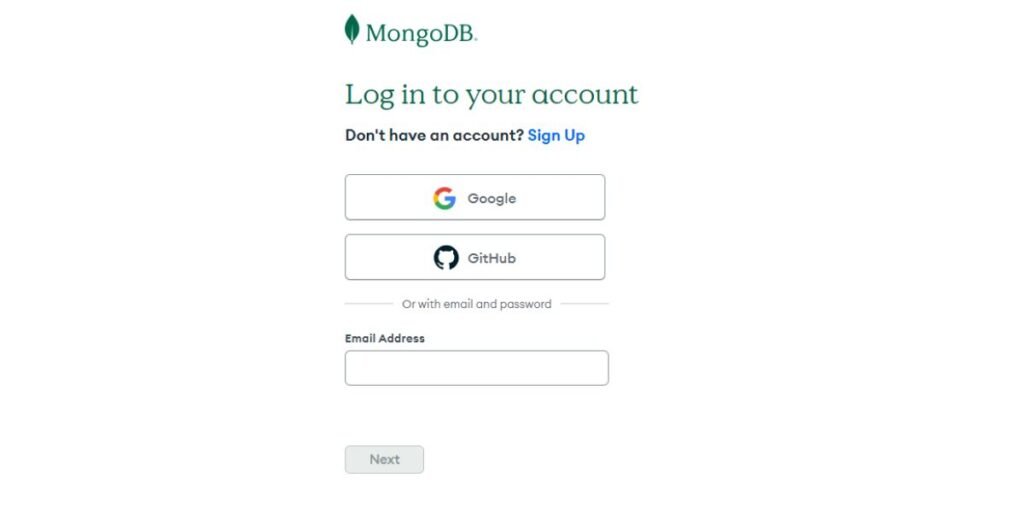MongoDB Atlas Login is a fully-managed cloud database service that simplifies database management for developers and businesses. The platform allows users to deploy, manage, and scale MongoDB databases on cloud infrastructure providers like AWS, Google Cloud, and Microsoft Azure. In this guide, we will cover everything you need to know about the MongoDB Atlas login process, along with key insights on how to download MongoDB, use MongoDB Compass, and make the most out of MongoDB cloud services.
Read Also: www.esanjeevani.in login – How to Access the eSanjeevani Teleconsultation Portal | PMFME Login: A Comprehensive Guide for Entrepreneurs
What is MongoDB Atlas?
MongoDB Atlas is the official cloud database solution provided by MongoDB. It eliminates the complexity of database management by automating tasks such as provisioning, patching, and backups. Whether you are managing a small application or scaling an enterprise solution, MongoDB Atlas provides the flexibility and power to manage databases seamlessly in the cloud.
Key Features of MongoDB Atlas:
- Fully Managed Cloud Database: MongoDB Atlas handles the database infrastructure, so developers can focus on building applications.
- Multi-Cloud Support: It supports deployment across AWS, Google Cloud, and Microsoft Azure.
- High Availability: The platform offers automated failover and backups for disaster recovery.
- Security: MongoDB Atlas includes end-to-end encryption, role-based access control, and VPC peering for enhanced security.
How to Login to MongoDB Atlas – Step-by-Step Guide
Logging into MongoDB Atlas Login is your first step toward managing your cloud database. Follow these steps to easily access the platform:

- Visit the MongoDB Atlas Website
Navigate to the official MongoDB Atlas Login website at https://cloud.mongodb.com. - Click on ‘Sign In’
On the homepage, find the ‘Sign In’ button at the top-right corner of the page. - Enter Your Credentials
Input your registered email address and password. If you don’t have an account yet, click on ‘Register’ to create one. - Complete Multi-Factor Authentication (MFA)
If you have MFA enabled, you will be prompted to complete the two-factor authentication (2FA) process by entering a code sent to your email or mobile device. - Access the Dashboard
After logging in, you will be redirected to your MongoDB Atlas dashboard. Here, you can manage your databases, clusters, and settings.
MongoDB Atlas Registration Process
If you are new to MongoDB Atlas Login, you’ll need to register an account before logging in. The registration process is straightforward and can be completed in a few steps:
- Visit the Registration Page
Go to MongoDB Atlas Registration. - Fill Out the Form
Enter your name, email, and password. Optionally, you can also sign up using your Google or GitHub account. - Verify Your Email
MongoDB Atlas will send you a verification link to your email. Click on the link to verify your account. - Log In to Your New Account
Once your email is verified, use your credentials to log in to MongoDB Atlas.
MongoDB Compass and MongoDB Atlas Integration
MongoDB Compass is a GUI (Graphical User Interface) that allows users to visually interact with MongoDB databases. You can use MongoDB Compass to connect to your MongoDB Atlas cluster, making it easier to query data, visualize schemas, and monitor performance.
Steps to Connect MongoDB Compass to MongoDB Atlas:
- Download MongoDB Compass
Visit the MongoDB Compass download page to install the GUI. - Obtain Connection String from MongoDB Atlas
Once you log into MongoDB Atlas, go to your cluster and click on the ‘Connect’ button. Select ‘Connect using MongoDB Compass’, and copy the provided connection string. - Open MongoDB Compass
Launch MongoDB Compass and paste the connection string into the ‘New Connection’ field. - Connect to Your Cluster
After pasting the connection string, click on ‘Connect’ to establish a connection to your MongoDB Atlas cluster.
MongoDB Cloud Services
MongoDB Atlas is more than just a database service—it also offers additional MongoDB cloud services that enhance its capabilities. These services allow businesses to leverage advanced analytics, data lakes, and serverless architecture for better performance and scalability.
Key MongoDB Cloud Services:
- MongoDB Data Lake: This allows for the storage and querying of data across different storage locations, including S3 and MongoDB Atlas.
- Atlas Search: A full-text search feature integrated with MongoDB Atlas, allowing you to build powerful search functionality within your applications.
- Atlas App Services: A serverless platform for building mobile and web apps directly on MongoDB Atlas. It also includes features like Realm for real-time data syncing.
MongoDB Download and Installation Guide
For developers who prefer to run MongoDB locally before deploying to the cloud, here’s a guide to downloading and installing MongoDB:
- Visit the MongoDB Download Page
Head over to the official MongoDB download page. - Select Your Operating System
MongoDB is available for Windows, macOS, and Linux. Choose the appropriate version based on your operating system. - Download and Install MongoDB
Follow the instructions provided by MongoDB to complete the installation process. - Verify Installation
Open your terminal or command prompt and typemongo --versionto verify that MongoDB has been installed correctly.
MongoDB Atlas vs. Self-Hosted MongoDB
| Feature | MongoDB Atlas | Self-Hosted MongoDB |
|---|---|---|
| Ease of Use | Fully managed, minimal configuration required | Requires manual setup, installation, and ongoing management |
| Scalability | Easy to scale with a few clicks | Scaling requires manual intervention |
| Security | Includes built-in security features like encryption and access control | Must configure and manage security settings manually |
| Cost | Pay-as-you-go pricing model based on usage | Requires dedicated infrastructure and higher operational costs |
| Backup & Recovery | Automated backups and restore options | Requires manual setup of backups |
Common Issues with MongoDB Atlas Login and How to Resolve Them
While the MongoDB Atlas login process is usually smooth, some users may encounter issues. Here’s a list of common problems and their solutions:
- Forgot Password
- If you forget your password, click on the ‘Forgot Password’ link on the login page and follow the instructions to reset it via email.
- Login Error After MFA Setup
- Ensure that your two-factor authentication (2FA) app is correctly synced with the server’s time. If the code from the app isn’t working, try resynchronizing it or re-enabling MFA.
- Account Locked
- If your account is locked due to too many failed login attempts, wait for 10 minutes before trying again, or contact MongoDB support for assistance.
- Cluster Not Visible
- If you log in but can’t see your cluster, ensure that you are in the correct project and organization within the MongoDB Atlas dashboard.
Conclusion
The MongoDB Atlas login process is a simple but essential step in accessing the powerful cloud services that MongoDB offers. Whether you’re managing databases, setting up clusters, or exploring MongoDB cloud features, logging into your MongoDB Atlas account is your gateway to seamless database management. With tools like MongoDB Compass and other cloud services, MongoDB offers developers and businesses the scalability and flexibility they need for modern applications.
FAQs About MongoDB Atlas Login
Q1: How do I log in to MongoDB Atlas?
To log in to MongoDB Atlas, visit theMongoDB Atlas Login website, click on ‘Sign In’, and enter your registered email and password.
Q2: What should I do if I forget my MongoDB Atlas password?
If you forget your password, click on the ‘Forgot Password’ link on the login page and follow the email instructions to reset it.
Q3: Is MongoDB Atlas free to use?
Yes, MongoDB Atlas offers a free tier with limited resources. However, for more advanced features, you may need to upgrade to a paid plan.
Q4: Can I use MongoDB Compass with MongoDB Atlas?
Yes, MongoDB Compass can be used to connect to your MongoDB Atlas cluster, allowing you to manage your data through a visual interface.
Q5: How secure is MongoDB Atlas?
MongoDB Atlas includes multiple layers of security, such as end-to-end encryption, IP whitelisting, and role-based access control.



